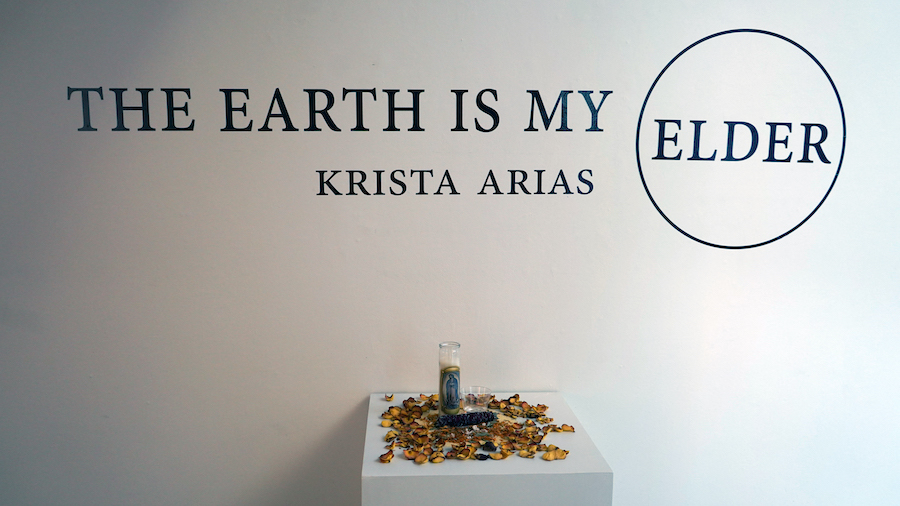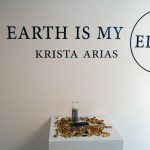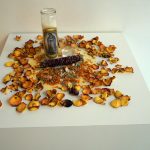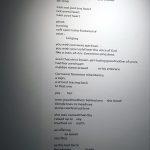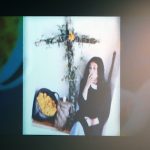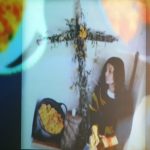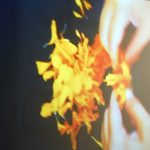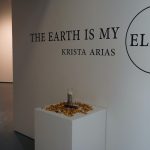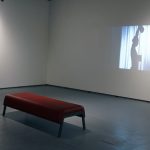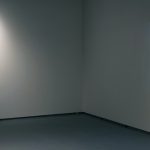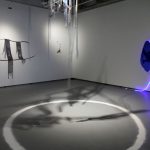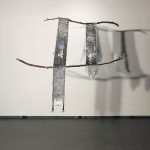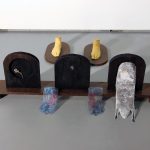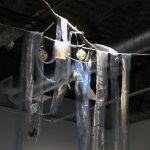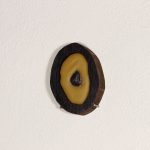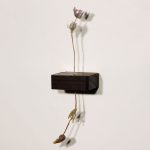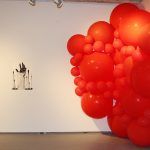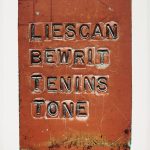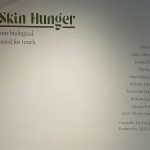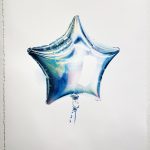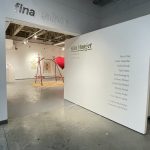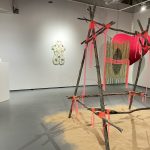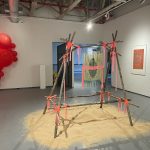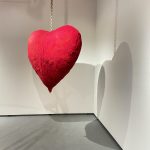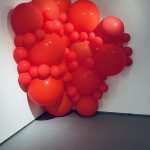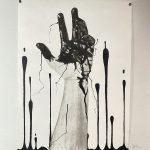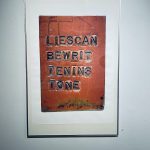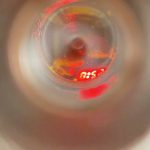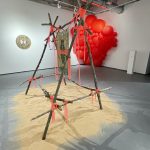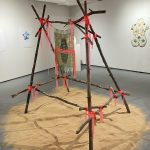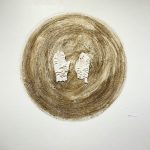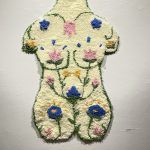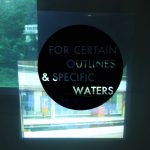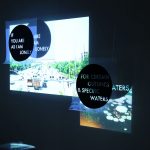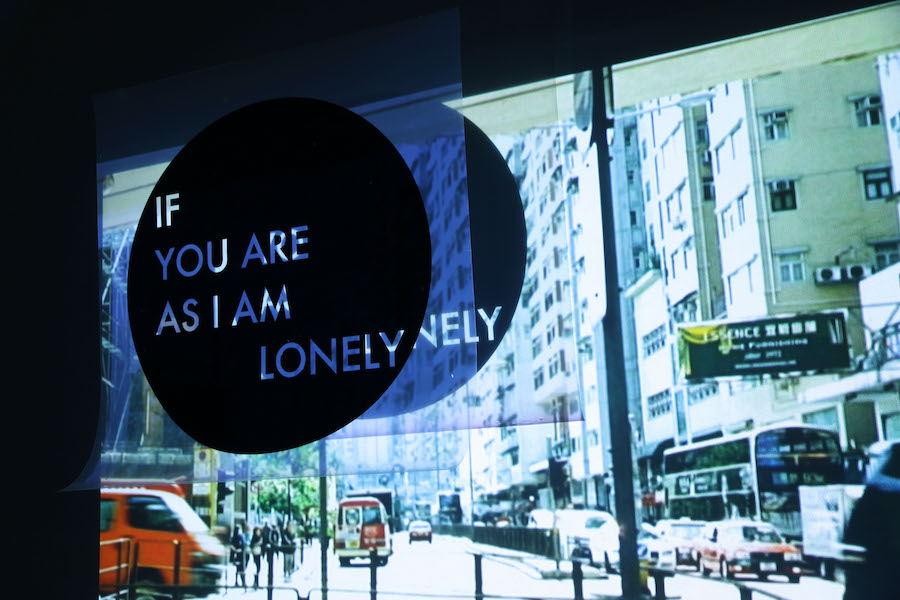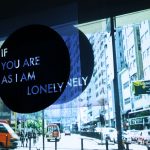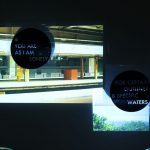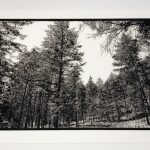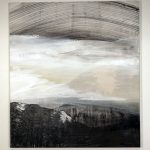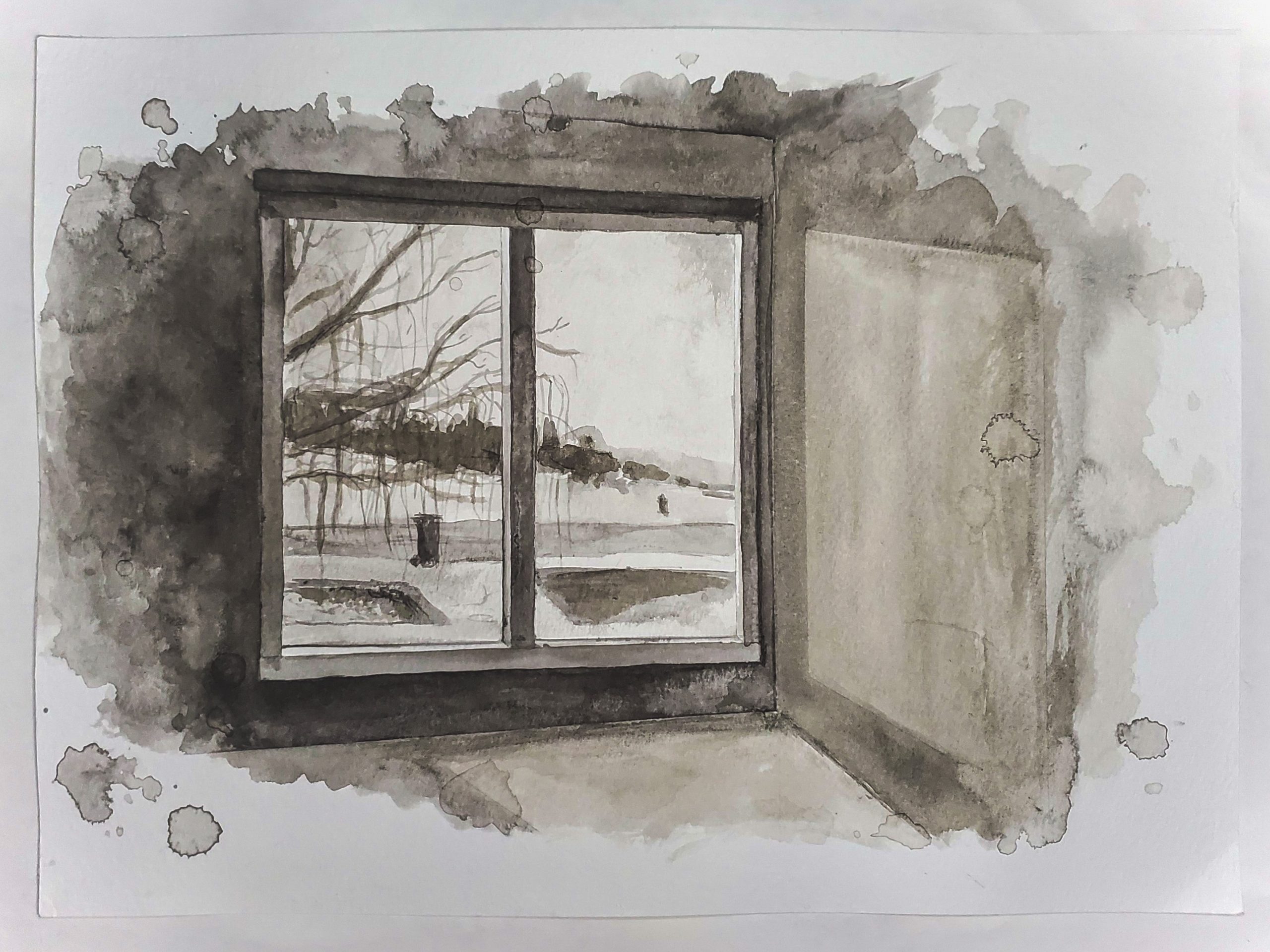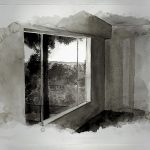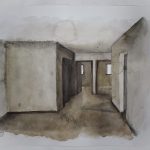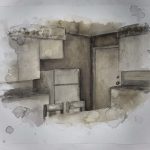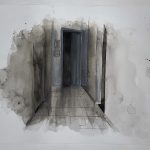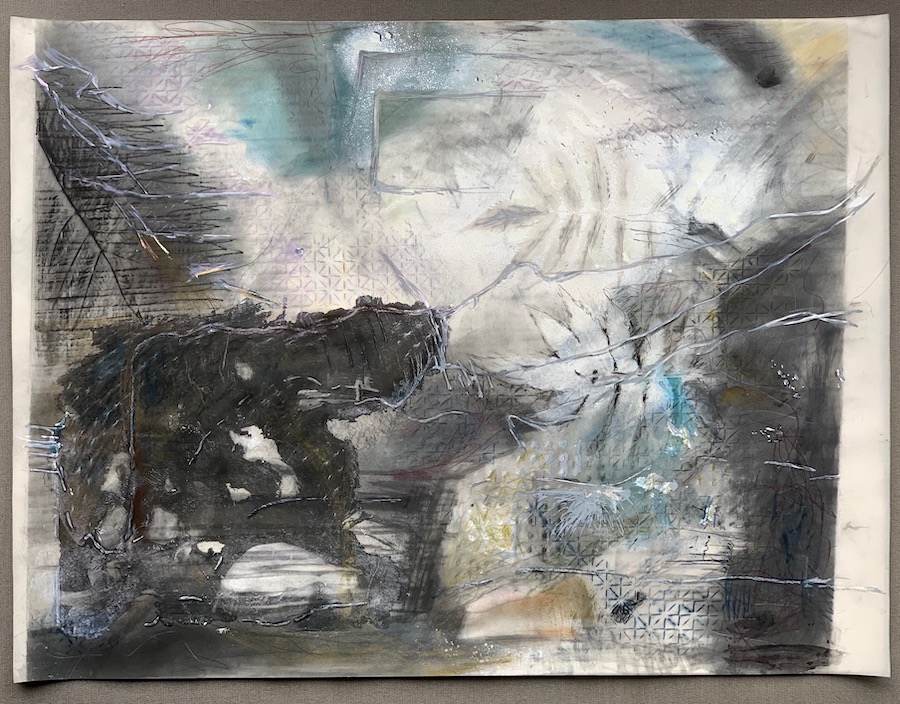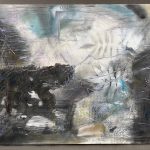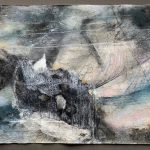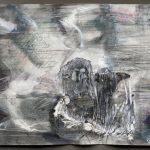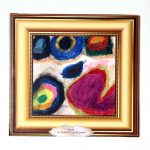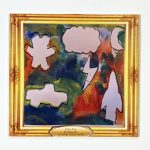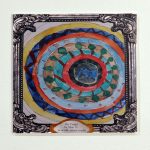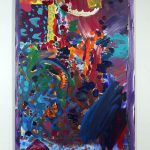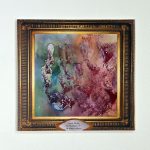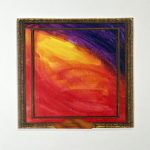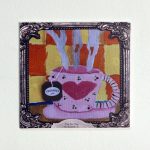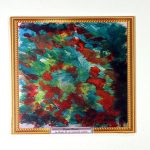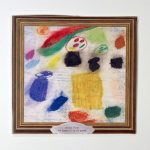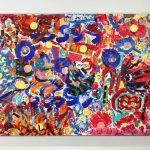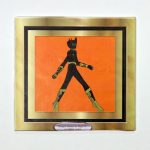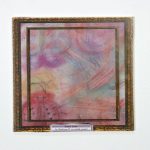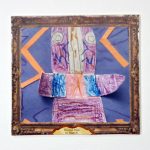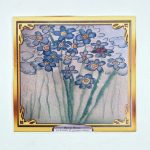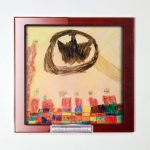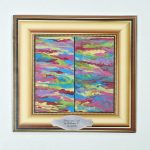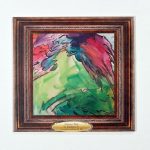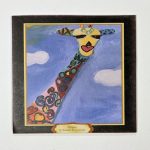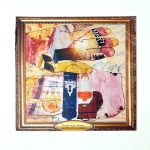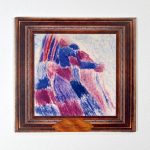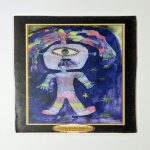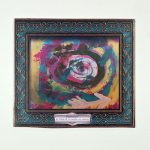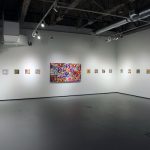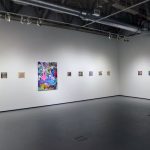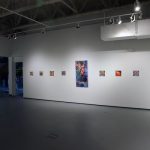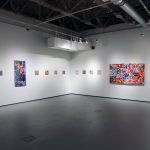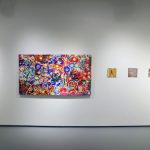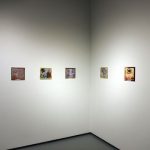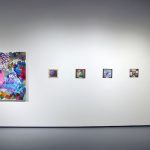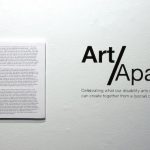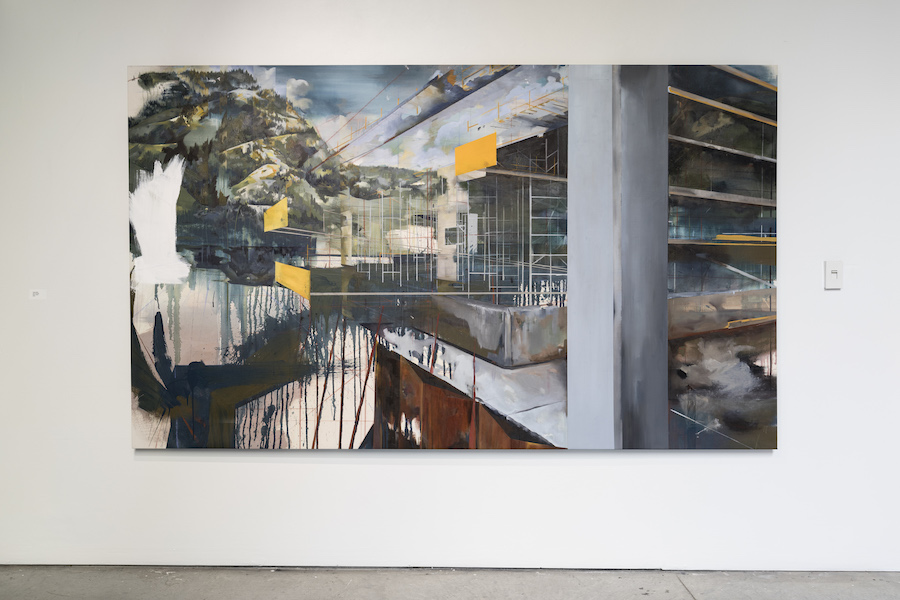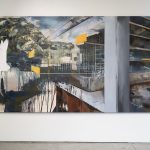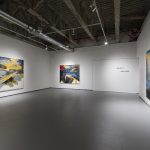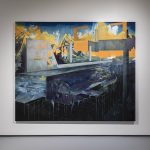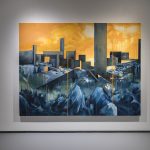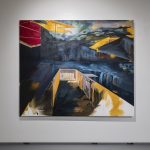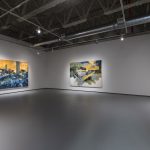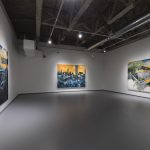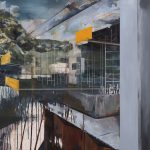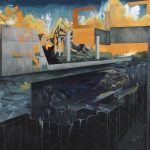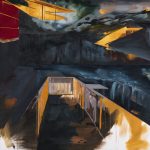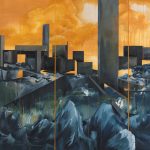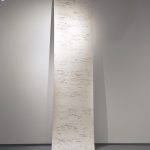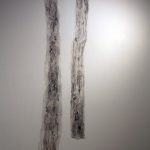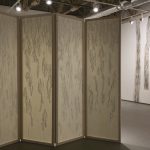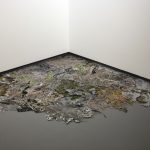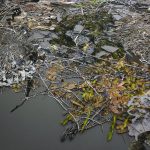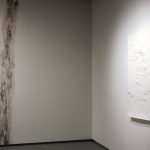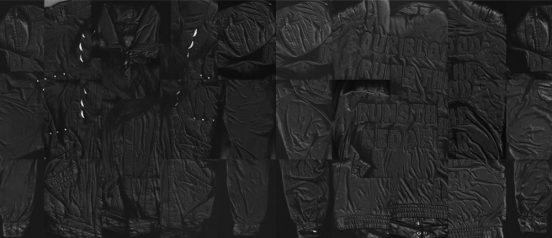
Category Archives: FINA Gallery Exhibitions


The Earth is my Elder
The Earth is my Elder is centred around the film, poetry and installation-based work of artist, poet and earth alchemist Krista Arias. Her work explores the complexities of reconnecting, as a woman and mother, to ancestral homelands, while living as an uninvited guest in Indigenous territories in the USA and Canada. As a member of the Xicana diaspora, Arias’ direct connection to Indigenous land, language and culture has been broken over generations of migration arising as necessity from colonial structures.
Krista Arias is a PhD student at UBC Okanagan, The Earth is my Elder is part of Krista’s final dissertation.


Black Harbinger of Spring (2021) by Michaela Bridgemohan
Black Harbinger of Spring (2021)
1 person(s): Make a promise to yourself
2 person(s): Make a promise to each other
Black Harbinger of Spring invites the spectator to the potential of playful encounters with the objects. As visitors share the same space as the work, they will come across moments where they can decide to activate them by bodily stepping into the area(s) or communicate through word or gestures. Inspired by childhood activities like criss-cross apple sauce or cross your fingers, hope to die, Black Harbinger of Spring entrenches these innocent acts through a tension of feeling unease or existing conflicting assumptions. Hoping to shed the old and be rebirthed anew.
Michaela Bridgemohan is an interdisciplinary Canadian artist of Jamaican and Australian descent. She grew up in Mokinstsis, also known as Calgary, but now resides in Syilx nation, Kelowna, BC. She’s currently an MFA student at the University of British Columbia – Okanagan and has received my BFA (with Distinction) from the Alberta University of the Arts in 2017. Bridgemohan’s artistic research examines Black mixed-race subjectivity and the visual ambiguity surrounding those kinds of bodies. Her work has been exhibited across Canada and Australia, in gallery exhibitions reflecting various intersections of contemporary Blackness and feminism.
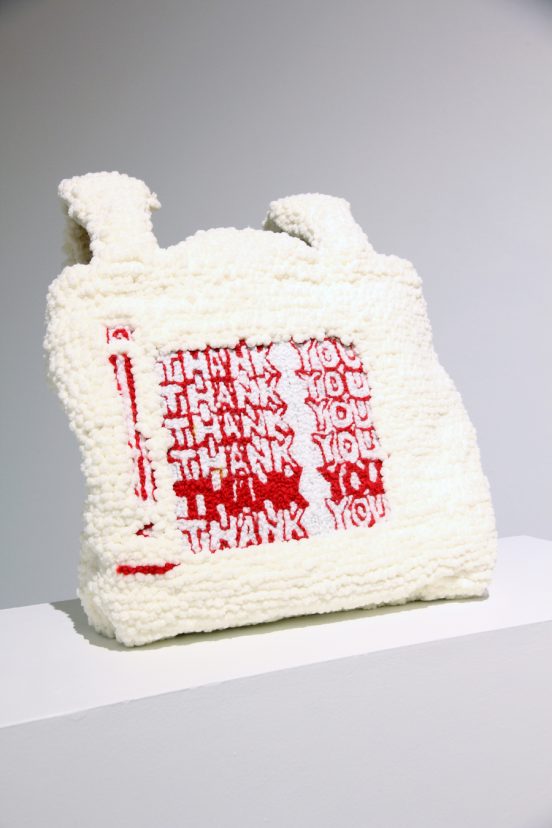
Skin Hunger
Skin Hunger features works from UBCO’s Bachelor of Fine Arts students, Masters students, and faculty members, displaying works focusing on the theme of our need for touch and the impact that social distancing is having on our “Skin Hunger”. This exhibition is a project for a curating course by Stacey Koosel, instructor at the University of British Columbia Okanagan. It allows students to hone their skills into curating their very own exhibition and an opportunity to broadcast their talents.
All the artists are members of the UBCO artistic community, with students from UBCO’s Bachelor and Master of Fine Arts, as well as faculty members.
Jordan Doody, Briar Craig, Brittany Reizel, Avery Ullyot-Comrie, Hana Hamaguchi, Pip Dryden, Ashley Desjarlais, Bethany Hiebert, Arianna Tooke, and Jordan MacDonald.
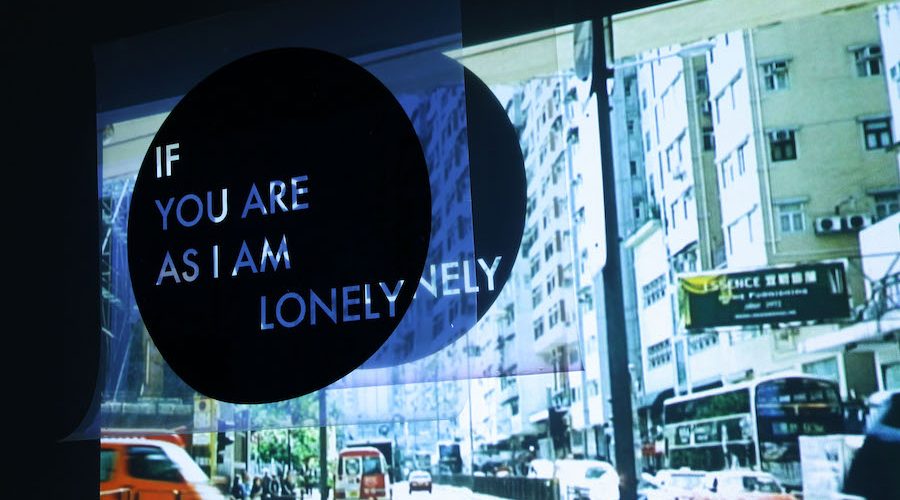
YOKE
YOKE is a multi-disciplinary show gathering recent works by fourfirst-year MFA students at UBC-Okanagan: Michaela Bridge-Mohan, Natasha Harvey, Xiaoxuan / Sherry Huang, and Scott Moore.
Art is a practice of yoking as much as it is the very material by which things come together and continues to hold us together.Gathering under the exhibit’s name, these works collectivelycontemplate the apparatuses and affects that bring us together, anidea made fraught by the pandemic. How should we be when we’re together? And how can art help us imagine ways to continuebeing together that are sustainable, caring, forgiving, loving – to ourselves and to each other?
Xiaoxuan / Sherry Huang is an interdisciplinary poet who plays in the mediums of music, photography, and print. She conceives of poetry as both a happening (an event with a time and a place,) and an art object. She seeks to create poems that are immersive, embodied, and experiential works of art in their own right.
Her recent full-length publication, Love Speech, (Metatron Press 2019,) is an intersection between poetry and epistolary auto-theory.
Across her body of work, she is interested in love, speech act theory, epistolary address, and écriture féminine.
Connect with her online at xiaoxuanhuang.com and on instagram as @xiao_xuan_huang
Artist Statement:
IF YOU ARE / CERTAIN OUTLINES
vinyl-cut poem on transparent inkjet film, two-channel projection of 35 mm photos, ambient guitar drone (6 minutes / looped forever).
The text in IF YOU ARE/CERTAIN OUTLINES belongs to a larger collection of anti-narrative love poems currently being written, called ALL THE TIME. ALL THE TIME explicitly triangulates the relationship between love, queerness, and time by presenting traces of love over long distances, long terms, and of longing that persists despite separation.The seamless looping of sound and image in IF YOU ARE/CERTAIN OUTLINES evade compositional linearity, recreating queerness’s anachronism in three-dimensional space.
Natasha Harvey – Artist Statement
Natasha creates both abstract and representational works of art. She is a mixed media artist and collage is a key element in her work. Mixed media gives her an immense platform of creativity and expression. Natasha is passionate about two dimensional disciplines in visual art. Drawing, painting, photography and printmaking practises are combined and layered in her art making process. Natasha has discovered throughout her education and career, that the process is as important as the completed work of art.
The paint is given a voice. The energy of the medium, expressed in pools of paint, dripped across the canvas, springs to life without the intervention of a brush or knife. Energetic mark making illustrate a feeling of vitality, spirit and spontaneity. Her most recent mixed media paintings depict landscape. The landscapes are abstracted and large scale. It is her intention to evoke an emotional response through her use of colour, texture, atmosphere and composition. Collage brings forth areas of photography. Photographic images are torn up and reassembled to create a new world, a local landscape that doesn’t really exist. Photographs work harmoniously with the more abstract areas of the composition. Texture, drips and puddles blend with representational images, creating an ebb and flow, a push and pull between reality and the imagination.
Action and Object Drawings from VISA 300 001, Advanced Practice in Drawing
“This selection of drawings is intended to function as a conversation between two opposing but interrelated definitions of drawing as both verb and noun that the students considered this semester.
When considered as a verb drawing can be understood as a temporal, process-based action, something that we do. When considered as a noun, we focus more on its role as an autonomous art object or image, something that is there, to be viewed. Most of the time both definitions apply.
In focusing on drawing as a conduit between self and other, both through its making and its viewing, themes emerged of relationships to and perceptions of time, place, and bodies.”
Alison Trim, Instructor VISA 300O001
List of works
01 Jen Poodwan, Computer Biology, digital, 1758 x 1324px, 72dpi
 A crossover of the digital and the biological.
A crossover of the digital and the biological.
02 Madison van der Gulik, Queen Lucy, Copic markers, prisma color pencil crayons, 14″ x 10.5″
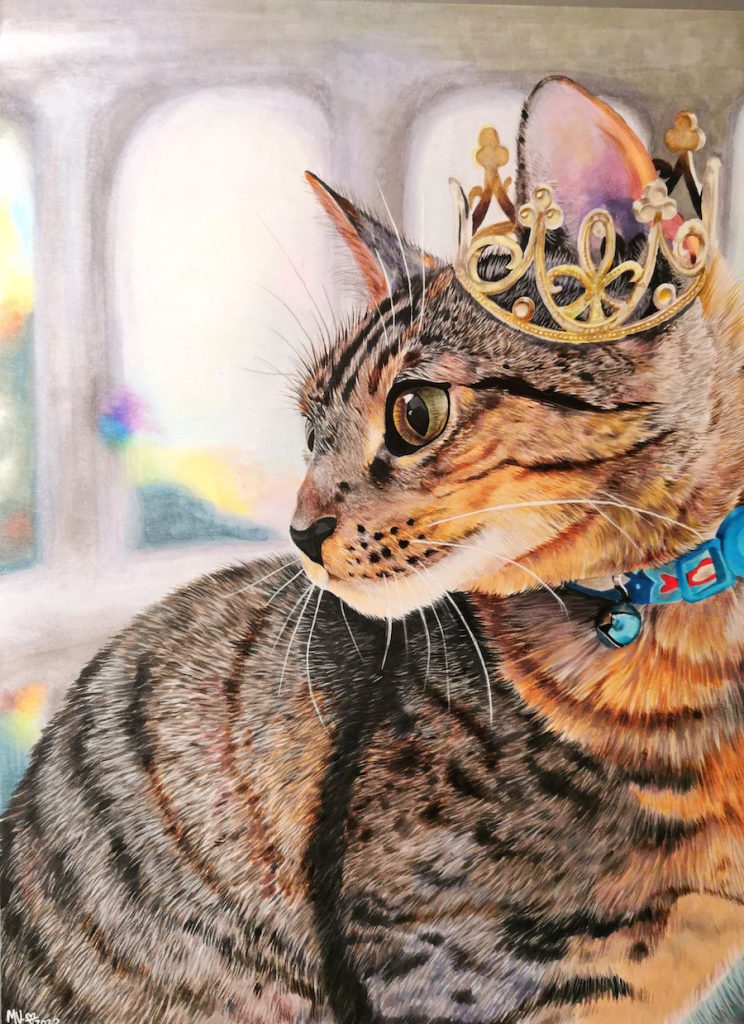 A personal drawing meant to put emphasis on the importance some people give pets.
A personal drawing meant to put emphasis on the importance some people give pets.
03 Ari Sparks, Two Boys Kissing, plastic fuse beads, 27” x 19”
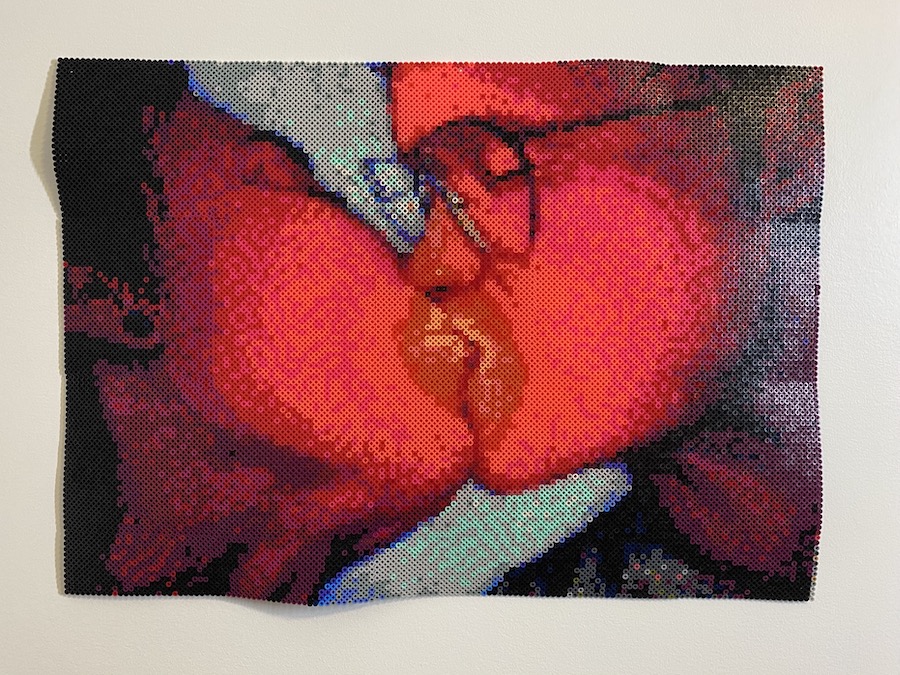 Our already increasingly virtual experience of interaction and connection has been deeply exacerbated by the coronavirus pandemic. This work explores the experience and mediation of pixelated information in a digital era by representing an act of intimacy, through the physical process of individually placed beads.
Our already increasingly virtual experience of interaction and connection has been deeply exacerbated by the coronavirus pandemic. This work explores the experience and mediation of pixelated information in a digital era by representing an act of intimacy, through the physical process of individually placed beads.
04 Angela Wood, One Place After Another, ink & watercolour on paper, 11 x 15” each
1 Apartment, 2 Backyard Neighbour, 3 Cul-de-Sac, 4 City Kid, 5 Prairie
This series is an exploration of past self and existence in place. These spaces are personal to my life but are rendered with little detail aside from architectural structure, allowing room for each viewer to place themselves within the works and more openly interpret them.
05 Sidney Steven
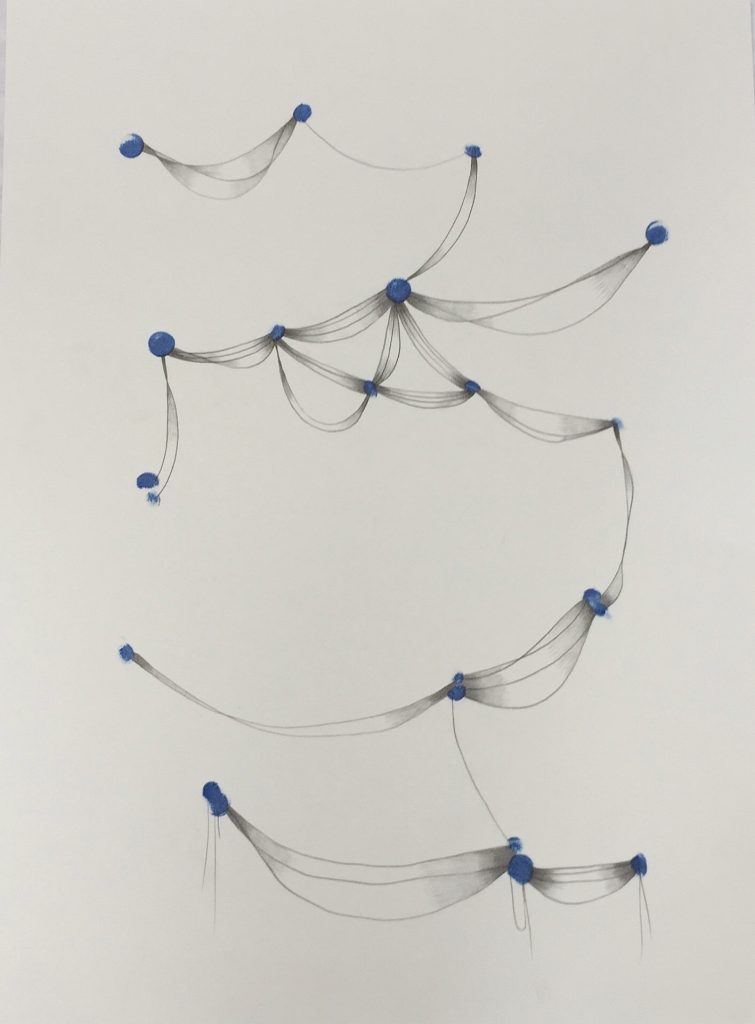 (We) Move in Unison, graphite with bingo dabbers on paper, 18” x 24”
(We) Move in Unison, graphite with bingo dabbers on paper, 18” x 24”
Time only goes in one direction, so I wanted to visualize that even though we all move in different ways in life, we are still connected to time.
06 Brett Dopp, Die Kirche, digital, 3600 x 5400 px
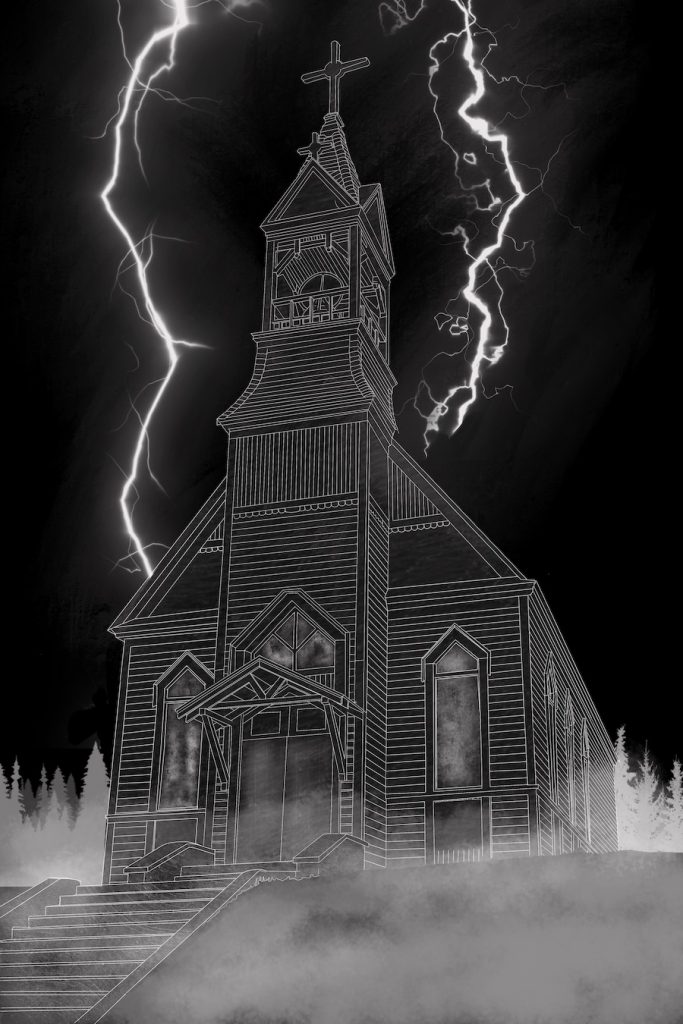 What’s more spooky than an old church?
What’s more spooky than an old church?
07 Shelley Sproule, Spectacular Fall at Billie Bear (Muskoka), watercolour and gouache, 22″ x 15 ”
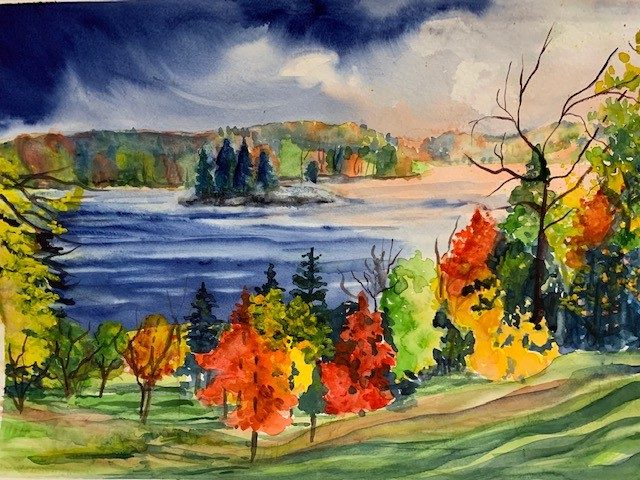 Billie Bear is a resort outside of Huntsville Ontario in the Muskoka Highlands. Fall colours are spectacular giving the viewer an almost surreal experience.
Billie Bear is a resort outside of Huntsville Ontario in the Muskoka Highlands. Fall colours are spectacular giving the viewer an almost surreal experience.
08 Pip Mamo Dryden, A Momentary Life, pencil crayon and watercolour, 12” x 16”
 A Momentary Life is an examination of how we remember people who have died, and the way we perceive people we’ve never met.
A Momentary Life is an examination of how we remember people who have died, and the way we perceive people we’ve never met.
09 Faith Wandler, Silhouette, 11”x 15”x 3, acrylic ink on watercolour paper
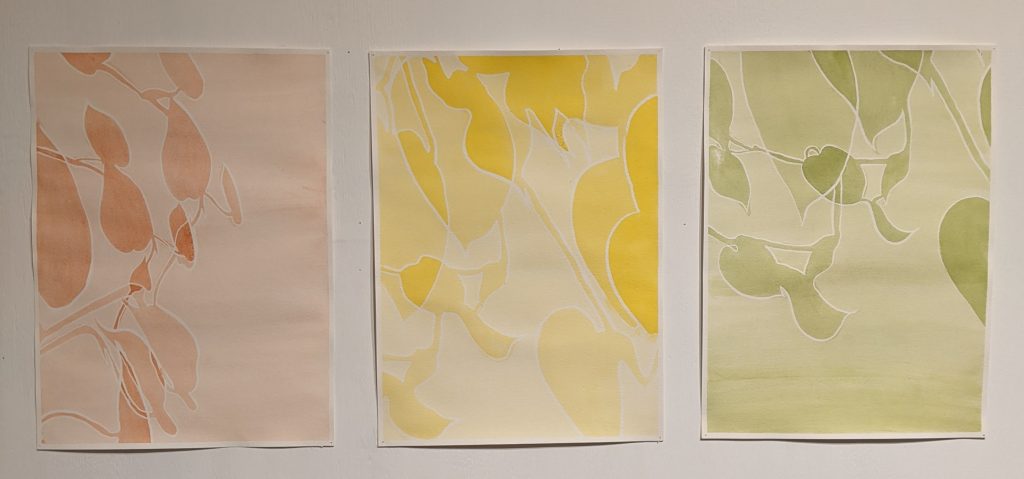 My theme is dealing with inhabitants of space and how the plants I have in my studio can create their own imagery from the shadows that they cast on my walls. I hope to bring the viewer a sense of calmness and nurturing just as my plants do for me in my studio space.
My theme is dealing with inhabitants of space and how the plants I have in my studio can create their own imagery from the shadows that they cast on my walls. I hope to bring the viewer a sense of calmness and nurturing just as my plants do for me in my studio space.
10 Andrew Halfhide, Familiar Figure, marker on Bristol board, 6’x 1.5’
 The aim of this work was to draw without the biases of habit and focus more on the figure I was trying to capture. Drawn using my weaker (left) hand and at this life-size scale made the figure seem more tangible during the drawing process.
The aim of this work was to draw without the biases of habit and focus more on the figure I was trying to capture. Drawn using my weaker (left) hand and at this life-size scale made the figure seem more tangible during the drawing process.
11 Adrianna Singleton, Dys Connect, charcoal, ink, oil pastel on canvas, 3 ft x 1 ft
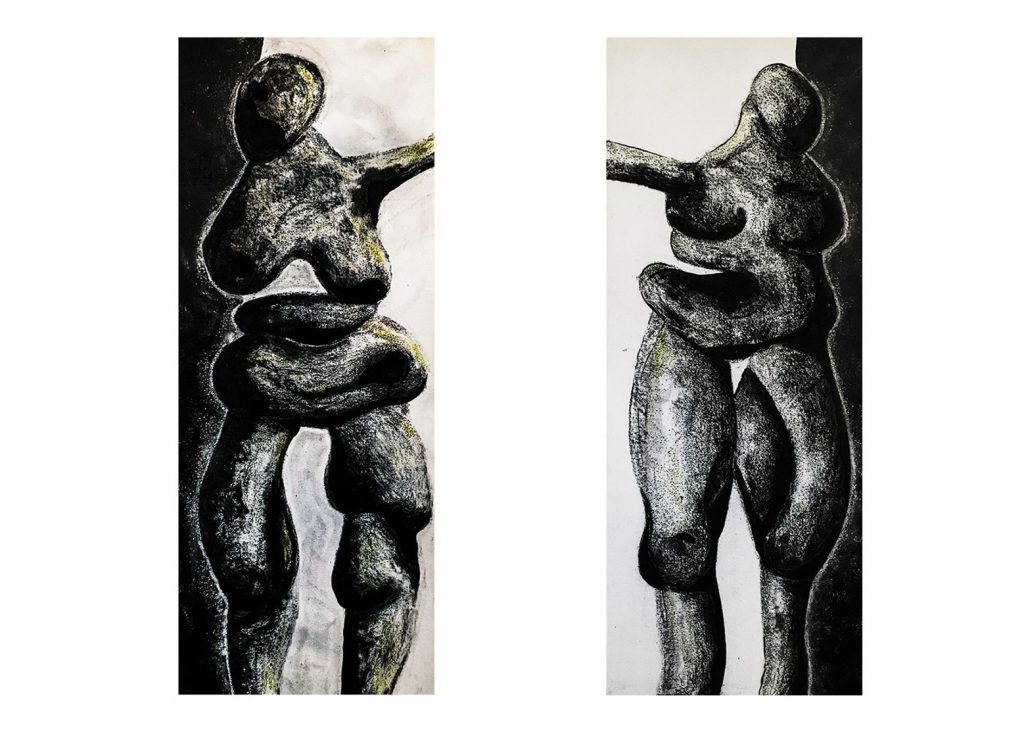 This piece is about the distortion of my perception due to body dysmorphia. Struggles of my ‘problem’ areas are amplified; face, chest and thighs.
This piece is about the distortion of my perception due to body dysmorphia. Struggles of my ‘problem’ areas are amplified; face, chest and thighs.
12 Candice Hughes, Nana Says, graphite on paper, 28’’x30’’
 A recreation of the only image of my Nana in the remaining years of her life.
A recreation of the only image of my Nana in the remaining years of her life.
13 Susan Protsack, Moving ~ Memories I, mixed media on cartridge paper, Moving ~ Memories II, mixed media on handmade paper, Moving ~ Memories III, mixed media on drafting film, each 20” x 30”
These works are based on textural rubbings of surfaces in a home from which I recently moved. Many of the surfaces are associated with personally meaningful events and so, for me, these works are souvenirs evoking moving memories.
13 Amily Wang, Aquarium, ink and watercolour on paper
 To make this work I began with looking at the different shapes of the fluid ink drop to give it more meaning.
To make this work I began with looking at the different shapes of the fluid ink drop to give it more meaning.

Art Apart – celebrating what our disability arts community can create together from a (social) distance
Although many of us have had to be separated during this time — which has been especially hard on those of us with disabilities and health issues — we at Cool Arts still managed to come together to make art as a community. Art/Apart, much like the manner it was made in, might feel disjointed at first, discombobulating, even a little bit of a hodgepodge, if you like. Look closer though and you might just see inspiration leap. Page to page, brushstroke to crayon, there is not one single piece in this gallery that has not been inspired by another here. Why? Because these many pieces were made together by our tight-knit community of dedicated artists with developmental disabilities and other exceptionalities. Here, we’re advocating the legitimacy of this collectively created aesthetic that is the byproduct of a unique set of lived experiences. But most of this work this wasn’t created in our downtown Kelowna, BC studio, nestled in the Rotary Centre for the Arts. Instead, for the first time in our organization’s nearly two-decade-long history, every artist featured in our latest show has had to work in isolation. When the COVID-19 pandemic began, we knew it was essential to keep our Cool Arts community together, even from a distance. We started with moving our community programming to pre-recorded video lessons and rapidly progressed to live video conferencing and even a few limited attendance in-person programs behind clear plastic sheets. The shift in platform naturally changed the relationship between facilitators and our membership into a more intimate mentorship focused one. Some artists worked on scraps of paper out of the recycling bin, others started filling up notebooks long forgotten. We began delivering art supplies using physically distanced techniques picked up from the food curriers we’ve become so dependant on over the past few months. And every day, here at Cool Arts, we were receiving a plethora of emailed photos of these artworks from our artists, their families, and support workers. Before we knew it, we’d amassed a significant collection and knew we had an obligation to share it. Looking back, it seems obvious that one artist’s mentorship session would influence the others on the same screen and so on and so forth. However, for us, we didn’t get to see the interplay of intersecting interests influencing each work until we started laying out the pieces for this show. Originally, we were going to present this collection virtually via social media. Then when we saw how stunning all the pieces looked, we decided to put them up in digitally overlaid frames printed on posters around Kelowna’s Cultural District. But seeing those pieces together made us realize this show had to go up in a gallery. Which direction would we take this show? If this pandemic has taught us anything as disabled folk, it’s that different barriers of access exist differently for different people. Nothing taught us this more than the different ways each of us had to engage in our art making individually over these past few months; coming together under new restrictions, whether live virtually, in physically distanced in-person lessons, or exchanging pre-recorded video letters. So in the end we decided that with all the sacrifices our community has had to make during these tumultuous times, Cool Arts deserved all three. Because this is a celebration of what our community can do, even apart. And at Cool Arts, that means everyone gets to join in the celebration. We hope you enjoy the show.
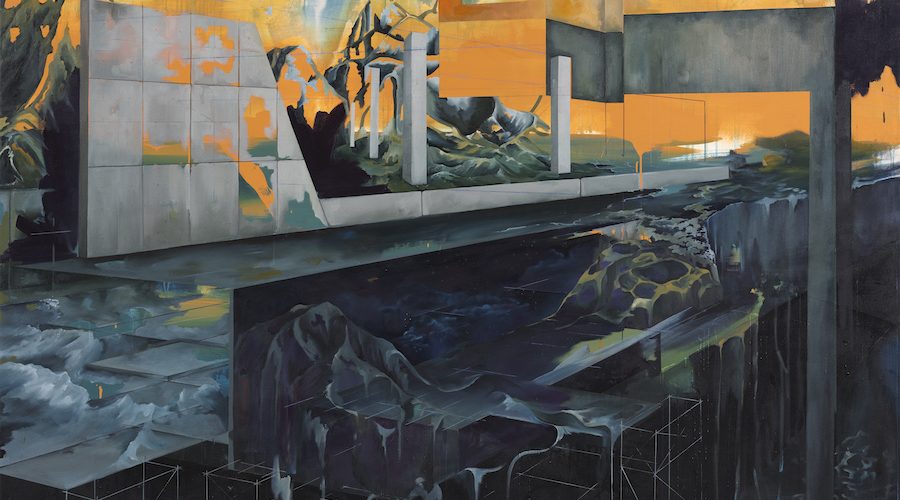
Lindsay Kirker: Away We Go
I paint images of construction with Nature as a way to reinterpret the world around me. This method of painting within my current body of work developed significantly after experiencing loss. I intuitively began taking pictures of construction sites, as a need for stability, manifested itself through an attraction to structure. Life felt chaotic, but I found salvation in scaffolding, cranes, and concrete. Through my artistic practice, common themes emerged: the idea of home and a sense of place, but more so, preservation, fragility, demolition, and creation. There was an immediate agency to create, and my paintings became both a response and a way to make sense of the nonsensical.
My thesis developed from a concern for the emotional and ethical disconnect required to live in the Anthropocene. The Anthropocene is the suggested renaming of our current epoch by geologists and earth scientists. There is no place on earth that has not felt the anthropogenic impact. We have transformed the earth system, and the evidence of this is species extinction, severe weather fluctuation, and ocean acidification.
Away We Go implies both a journey and a fear of saying goodbye. Contemporary philosopher Claire Colebrook suggests that for the first time, our extinction can honestly be imagined. The paintings displayed question the ideas and structures we put into place to protect us from these uncertainties.
The cityscape communicates structure. A sense of order is established through line, grid, and repetition, assuming pattern and stability, but this also suggests that life unfolds linearly. That we take the same unconscious routes among clearly defined paths, and that there is an order between our experience and the people we come into contact with. The painting reflects the human mind and behaviour, spontaneous encounters that occur outside of these assumed patterns of activity.
My paintings are a preservation and conservation of place and response to personal observations. Everything is connected. The process reflects the question, the narrative, and the concern. Layers show history, a struggle or an attempt to cover up that history, but human presence is felt, and the navigation towards understanding is left behind. What I am interested in far surpasses prefabricated concrete slabs constructed to contain. I am interested in the foundations of Being. When integrated with nature, the city’s infrastructure stands as a metaphor to explore all that we perceive as separate. The construction site is a place for rebuilding.
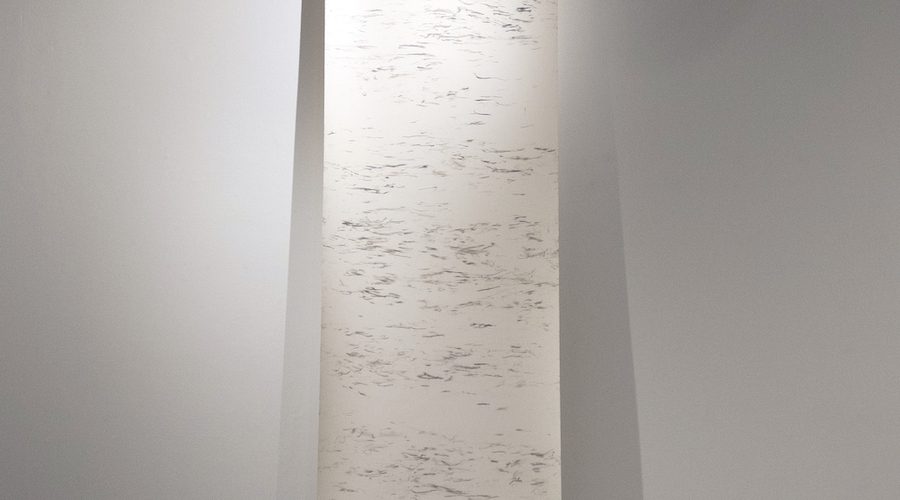
Still, they are speaking, Alison Trim MFA show
Still, They Are Speaking is an exhibition of expanded drawing practice developed in and with post-fire landscapes of the Okanagan valley.
In 2003 the Okanagan Mountain Park Fire spread across more than 250 square kilometres and consumed 239 homes on the edge of Kelowna. In land still scarred by that fire, blackened trunks dominate the skyline with a now-familiar stubble, while up close thriving ecosystems regenerate and continue despite encroaching urbanisation. Walking these hillsides, the stark beauty, richness of surface and visible traces of loss and regeneration found there, fascinate me. The thick fire-resistant bark of the Ponderosa Pine in particular, carries the marks of that past fire as charcoal that has become part of the living tree’s story, written in its skin. These marks speak of complexity and fragility, of sacrifice, resilience and renewal. They are a written language, present in the land, describing forms of knowledge that exist independently of us. Acknowledging this is an exercise in humility that requires us to imagine beyond the human.
My drawing practice demands a haptic engagement with materials and a physical immersion in place. Through touch and presence, I renegotiate my relationship to knowledge as an experiential form of understanding, beyond the bounds of language, and closer to that of the non-human. In making the drawings for this exhibition a collaborative contact of surfaces transfers charcoal marks from tree to paper, to become a record of conversations that have taken place between fire and land, footstep and ground, body and tree. This experience of drawing as an act of engagement with place, is translated into new physical encounters with drawing as object, installed within the gallery. Time and labour have been invested in repetitive and cyclical processes to develop complex, active surface. The use of paper, an inherently fragile medium, grounds the work in the temporality and physicality of the here and now. These drawings can be read, as maps, or experienced, as terrain, but they insist on presence.
I would like to extend my thanks and appreciation to the land and trees of this small part of the Okanagan valley, on the unceded territory of the Syilx Okanagan Nation. It has been a privilege getting to know this place, working amongst this land and responding to its stories.
- Book of Ponderosa, 1:1, Okanagan Edition, burnt Ponderosa Pine bark on rag paper, 36” x 60”

2. Wake (Ghost Limb), burnt Ponderosa Pine and Douglas Fir bark on mulberry paper with mixed media and rice paste, dimensions variable
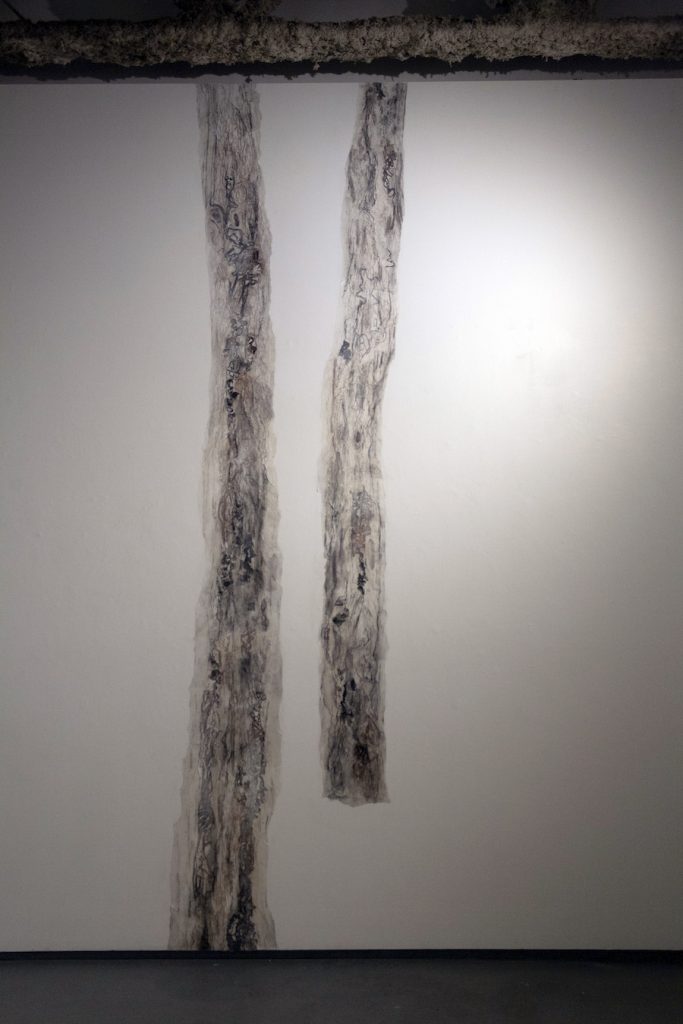
3. Aestas Sacrum, burnt Ponderosa Pine bark on rag paper, 36” x 180”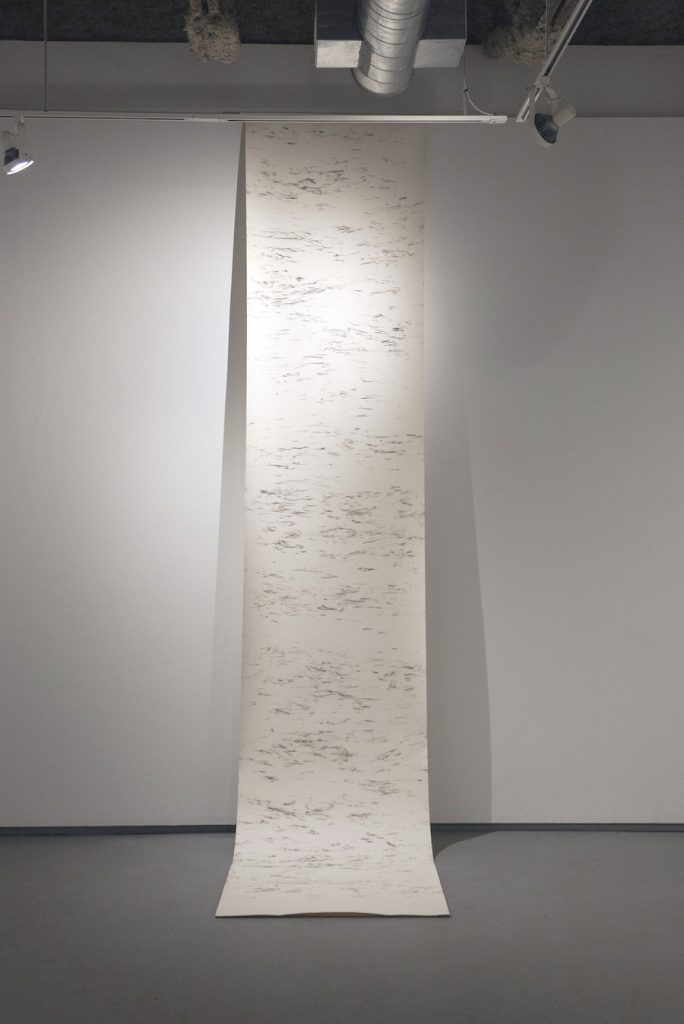
4. Inseparable (Pelt), hand-cut digital photographs on Enhanced Matte photopaper, hand-cut mixed media drawings, Ponderosa Pine needles, approx. 72”x 72”
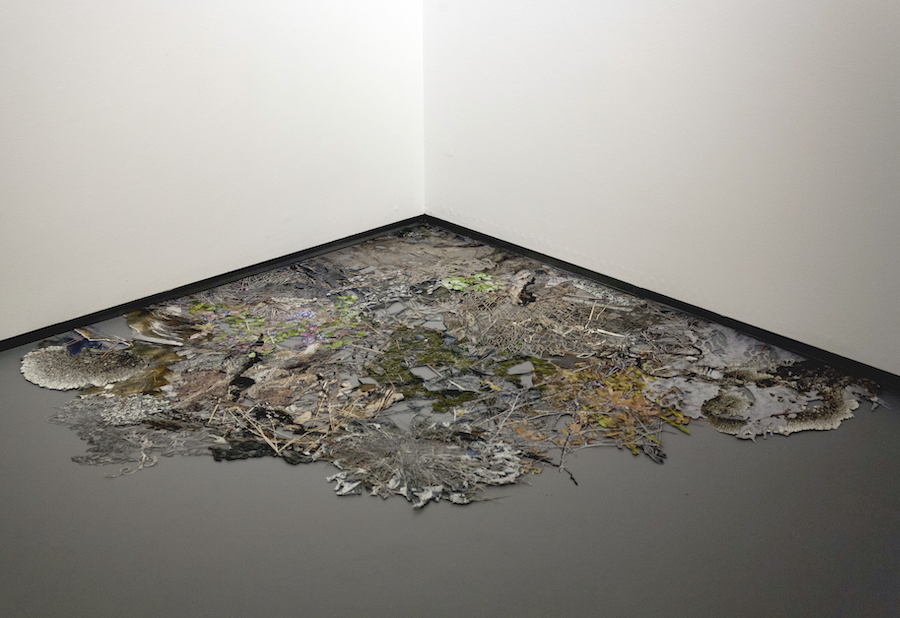
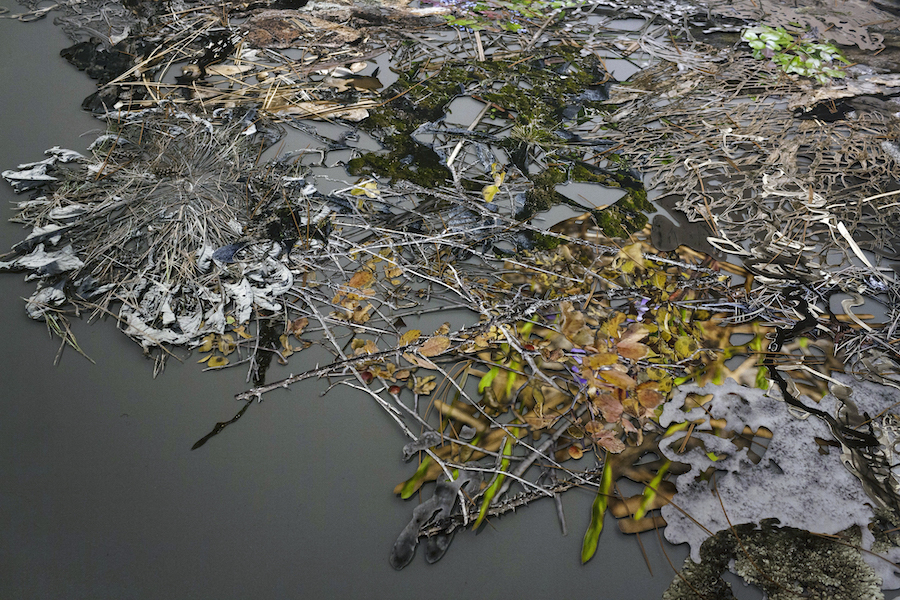
5. Interface (Pelt), burnt Ponderosa Pine bark and compressed charcoal on paper, planed pine, mulberry paper and cotton tape, 96”x 150”
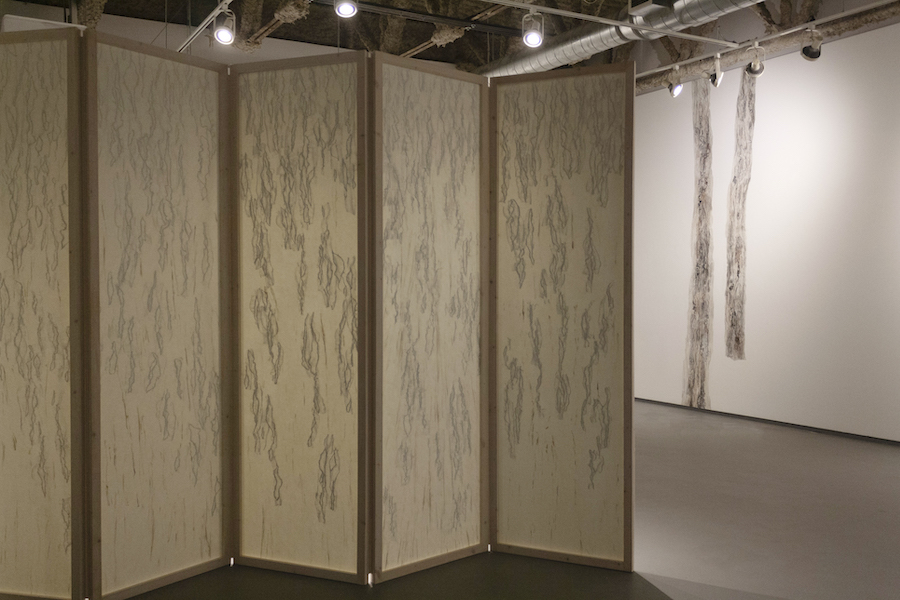

 Follow
Follow